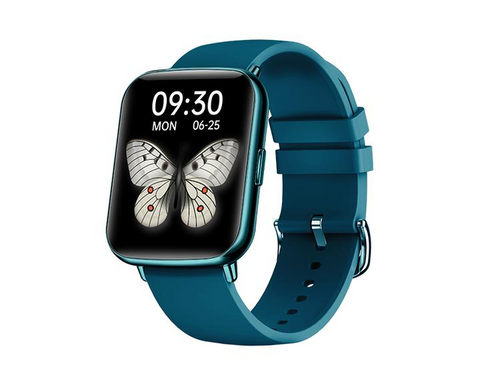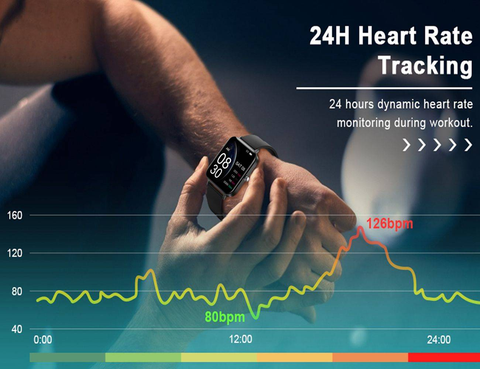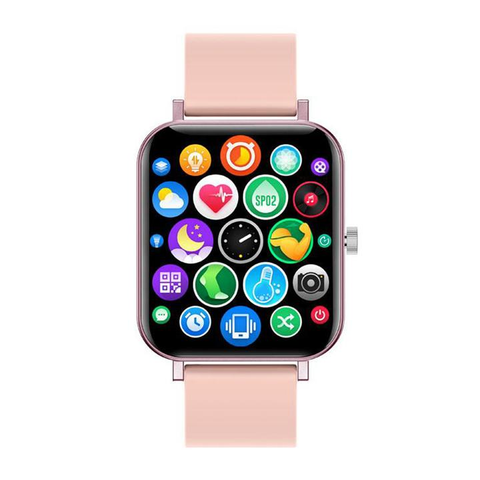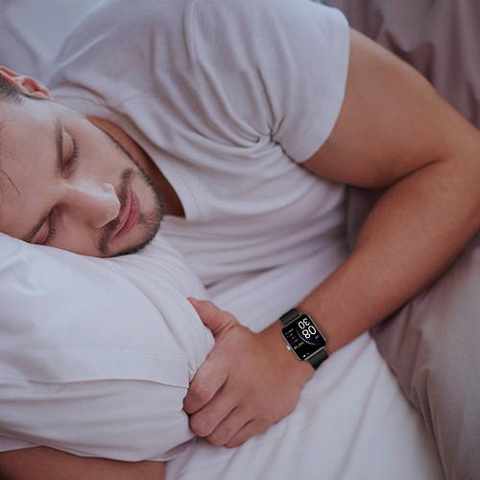Do You Know What Advanced Technology Smartwatches Have Integrated?

Why Do You Need a Smartwatch?
What is the Principle of Smartwatch Heart Rate Monitoring?
What is the Principle of Smartwatch Blood Oxygen Saturation Monitoring?
What is the Principle of Smartwatch Positioning?
What is the Principle of Smartwatch Sleep Monitoring?
Smartwatch technology has improved a lot in recent years, and they've also become a lot more popular. Smartwatches take many of the useful features found in a smartphone and put them on your wrist. They can be used to receive notifications, make and receive phone calls, and access a wide range of apps. They are often equipped with sophisticated fitness trackers that can analyze every movement you make, and some of the apps are genuinely useful. The newest models are also pretty stylish. And the wide selection of different faces means that you will never get tired of how they look.
Smart watches have a development history of more than 40 years since their development in 1972. Wearing a smartwatch is not just a trend for gadget lovers, it is also in demand and usually worn by athletes and health enthusiasts because it helps them with their fitness and health goals. Of course, it can tell you the date and time because that’s what watches do. But unlike the common features that normal watches have, smartwatches also have a lot of extra features that health-conscious people love during their workout.

Why Do You Need a Smartwatch?
Although sports smartwatches have a history of more than 40 years, smartwatches were not just in demand before. It was widely accepted by the public since 2012. Smartwatch devices are now the newest gift of modern technology in the tech market. These gadgets were created to execute basic functions because they have phone-like features and are powerful enough to operate just like mini computers. The main concept of a smartwatch is to make everyday life easier. Aside from that, a wearable technology suits every part of your wardrobe and prevents addiction in mobile phones.
Consumers now have a very great demand for smartwatches; the main reason is that smartwatches are more stable, versatile, flexible, and independent, and the data monitoring function is also compelling, which can show very reliable practicality in sports.
Sports enthusiasts especially are in favor of screen touch watches. There are many benefits of using smartwatches. Not only can it be connected to a mobile phone via Bluetooth, but it is also more convenient to play music, answer calls and receive text messages during exercise. Aside from that, they also have functions such as heart rate monitoring, blood oxygen saturation monitoring, positioning, and sleep monitoring, etc. Do you know what principles are used in these functions?
What is the Principle of Smartwatch Heart Rate Monitoring?
Smart watches generally use the green light photoelectric measurement method when monitoring heart rate.
Modern smartwatches use a flashing green light to measure your heart rate from your wrist. Spectroscopy tells us that blood absorbs green light because red and green are opposite each other on the colour wheel. The rear of the smartwatch contains an optical sensor to detect the reflected light. It’s essentially testing how much red or green light it can see when looking at the skin on your wrist. Blood is red because it reflects red light and absorbs green light, so when your heart beats, there’s more blood flow in your wrist, and more green light absorption. Between heart beats, there’s less absorption of green light.
The android smart watch monitors the heart rate based on the above principles. There are several green wavelength luminous LEDs and a photosensitive sensor on the back of the smart watch. When the watch is in contact with the skin, the sensor will emit a beam of light hitting the skin, and the blood is specific The wavelength of light has absorption. When the heart pumps blood, this wavelength will be absorbed a lot. The photosensitive sensor receives the reflected light from the arm skin and senses the change in the intensity of the light field, and then converts it into the heart rate, thus playing the role of heart rate monitoring.

What is the Principle of Smartwatch Blood Oxygen Saturation Monitoring?
When the smart watch measures blood oxygen saturation, it mainly relies on the built-in SpO2 sensor of the smart watch for real-time monitoring. The measurement principle is mainly: the absorption ratio of hemoglobin and oxyhemoglobin in the blood to infrared light and red light is different, and the blood oxygen content can be measured by irradiating the wrist with two LEDs of infrared light and red light at the same time, and measuring the absorption spectrum of the reflected light. .
By emitting light at these two frequencies, the sensor on the smart watch for women can detect pulse data. Using these data, the background professional algorithm can be used to calculate the estimated value of the user's blood oxygen saturation.
The blood oxygen saturation monitoring in the smart watch is very practical, which can help the user better monitor the heart rate and remind the health of the body in real time.
Medically, under normal circumstances, the oxygen saturation of human arterial blood is 95%-100%, and the oxygen saturation of venous blood is about 75%. During exercise, if the smart watch prompts that SpO2 is between 80-90%, it is mild hypoxia, you should stop the exercise in time and take a proper rest. When SpO2 is between 70-80%, it means moderate hypoxia. You should inhale moderate oxygen and take anti-hypoxia drugs. When SpO2<70%, it means severe hypoxia. Stop all activities and seek medical attention immediately.

What is the Principle of Smartwatch Positioning?
Waterproof smart watches positioning mainly uses three types of positioning technologies: GPS positioning, base station positioning, and WiFi positioning. Different smart watches use different technologies. Watches with low accuracy may only use one of these technologies, while smart watches with high positioning accuracy may use two or three positioning technologies.
What is the Principle of Smartwatch Sleep Monitoring?
Generally speaking, smart watches use three methods to monitor the user's sleep, namely, actigraphy, heart rate monitoring, and cardiopulmonary coupling (CPC) analysis.
- Body movement recorder method: The built-in gravity sensor in smart watch iphone compatible can monitor whether the user has a relatively large movement within a period of time. If the movement is relatively small, the watch will judge that it is in a sleep state, and it will be in a deep state if it is hardly moving. Sleep state.
- Heart rate monitoring method: The smart watch will use the heart rate monitoring method to judge the user's sleep, because when a person is asleep, the heart rate will generally drop, when in deep sleep, the heart rate will drop even lower, so The smart watch can then monitor sleep.
- Cardiopulmonary coupling (CPC) analysis method: This is a special algorithm that uses the analysis of the relationship between heart rate variability and respiratory variability. By analyzing the correlation and cross-spectrum power of these two signals, the dynamic spectrum of cardiopulmonary coupling during sleep is generated. In this way, the user's sleep status is analyzed, and the time of deep sleep, light sleep, and wakefulness can be analyzed.

Smartwatches really make everyday life easier and improve some of the aspects of your life. However, take note that it can’t do everything that smartphones can and they are not there to replace your phones. They complement it and make using it easier and helps you be more productive.
A smartwatch can add value to your life. You can replace a smartwatch with your cell phone due to the functions that it can perform. You can get your update throughout the day without feel like you are missing out on anything. There are many health apps that you can use to aid in your health journey. You can track your diet, exercise, and even your heartbeat. As you rely less on your smartphone you are preserving the battery life. Finally, if you are technology enthusiast then adding a smartwatch to your collecting is a must.
